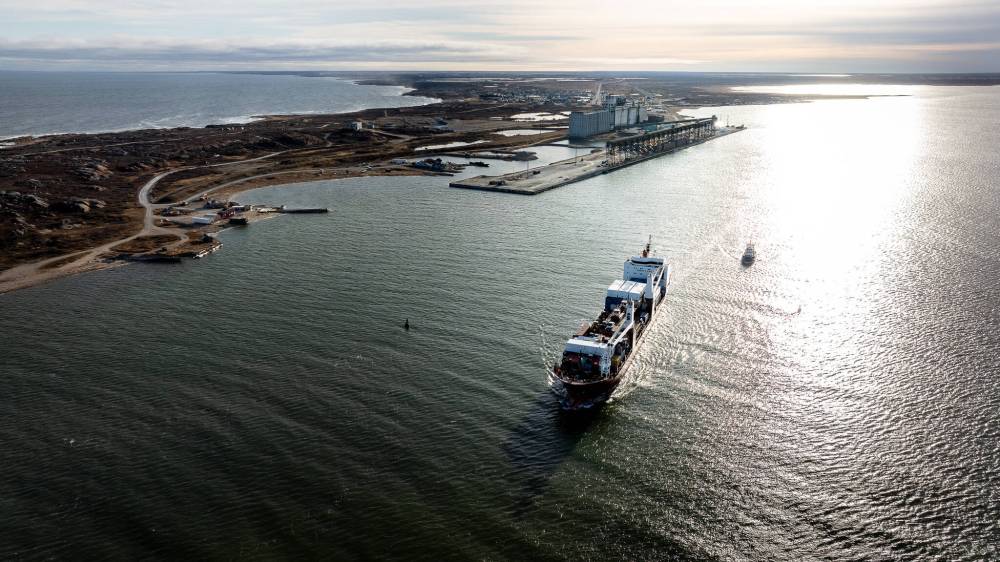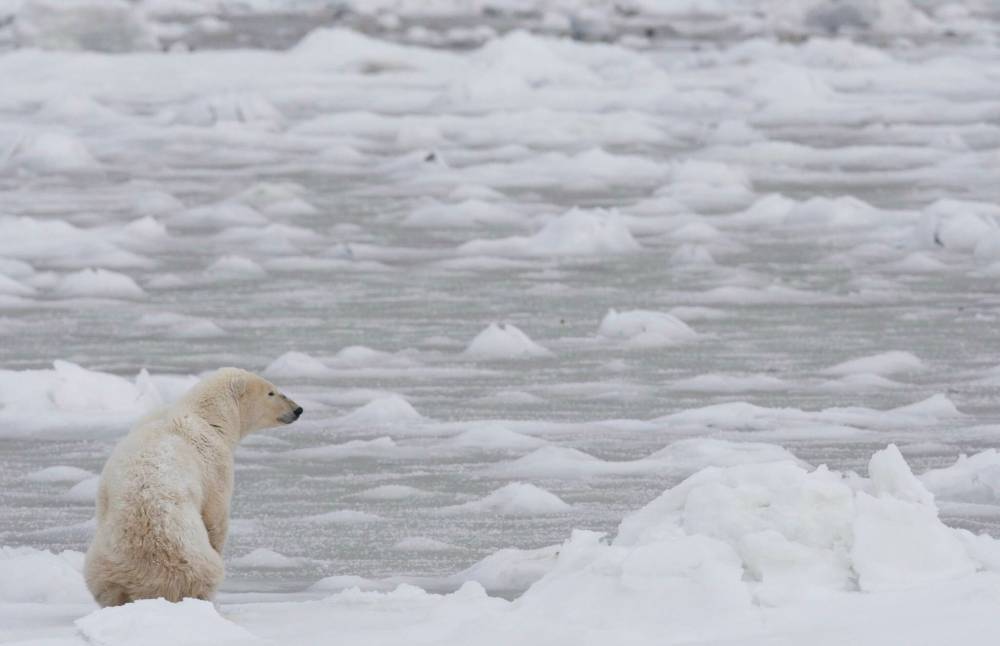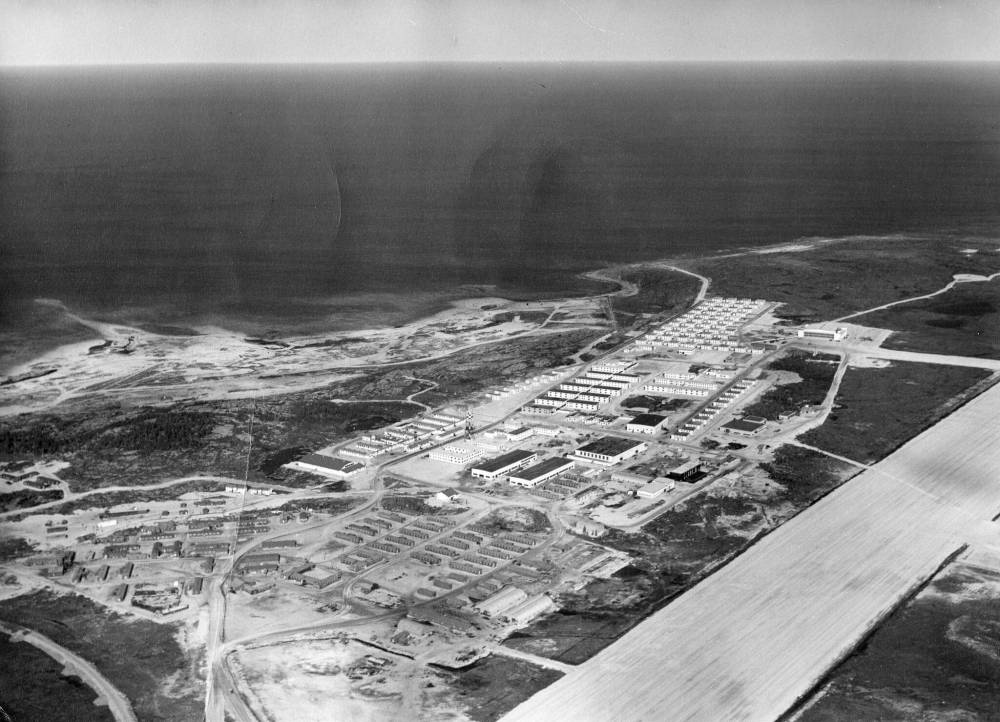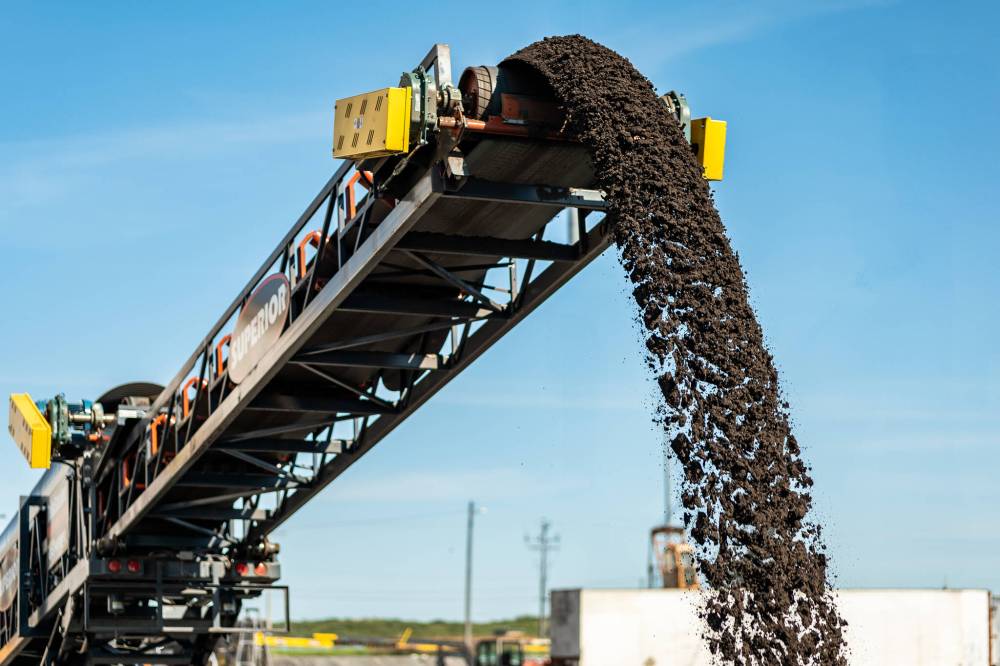From discarded depot to important port? As defence of Arctic sovereignty re-emerges amid shifting trade alliances, Churchill could play a key role globally with its deepwater seaport
Read this article for free:
or
Already have an account? Log in here »
To continue reading, please subscribe:
Monthly Digital Subscription
$0 for the first 4 weeks*
- Enjoy unlimited reading on winnipegfreepress.com
- Read the E-Edition, our digital replica newspaper
- Access News Break, our award-winning app
- Play interactive puzzles
*No charge for 4 weeks then price increases to the regular rate of $19.00 plus GST every four weeks. Offer available to new and qualified returning subscribers only. Cancel any time.
Monthly Digital Subscription
$4.75/week*
- Enjoy unlimited reading on winnipegfreepress.com
- Read the E-Edition, our digital replica newspaper
- Access News Break, our award-winning app
- Play interactive puzzles
*Billed as $19 plus GST every four weeks. Cancel any time.
To continue reading, please subscribe:
Add Free Press access to your Brandon Sun subscription for only an additional
$1 for the first 4 weeks*
*Your next subscription payment will increase by $1.00 and you will be charged $16.99 plus GST for four weeks. After four weeks, your payment will increase to $23.99 plus GST every four weeks.
Read unlimited articles for free today:
or
Already have an account? Log in here »
Hey there, time traveller!
This article was published 17/04/2025 (216 days ago), so information in it may no longer be current.
There’s a rumour, too fun to verify, that a half century ago in Churchill the military would shoot rockets at the northern lights with a strange goal in mind.
That the military did fire rockets to study the aurora borealis is well-known, but according to legend, one goal was to trigger a geomagnetic storm — a power that if harnessed could be used to wipe out the Soviet Union’s electrical grids if the Cold War ever became hot.
Locals regale tourists with such Churchill lore, which is rich sometimes to the point of fantastical.
Churchill legend has it the auroa borealis was eyed
as a potential secret weapon during the Cold War.
Perched on the edge of Hudson Bay, where the boreal forest gives way to the Arctic tundra and the North’s most dangerous predators roam, the town is ancient, enchanted with cultural myths and scientific mysteries, remote, sparse, rural. And yet oddly cosmopolitan.
Churchill hosts Canada’s northernmost deepwater port, where ship traffic has ebbed and flowed for nearly 100 years. It’s the last stop on a famous rail line that cuts through ice, forest, permafrost, tundra, muskeg and craton, all the way up from Winnipeg.
True patriot love
An ongoing series about our Canada, our economy, our independence.
The distance by train is greater than Toronto to Nashville, and the terrain definitely more treacherous.
These days another sort of rumour is circulating about Churchill: that this remote town of roughly 1,000 is poised to transform itself into a vital trade hub.
A mini-Rotterdam of the North, if you will, cleaving open access to overseas markets at a time when trade relations with our unneighbourly southern neighbour are going south.
The vision has its skeptics — those who say Churchill is fated to remain, at most, a niche port.
From the late 1990s until the mid-2010s or so, however, the harbour bustled in the summer and fall with ships carrying hundreds of thousands of metric tonnes of grain to foreign shores.
In that era, the promise of the “Arctic Bridge” — a sea route, promoted especially after the Cold War ended, connecting Canada via Churchill to Russia and Europe — felt alive and well.
The Arctic Gateway Group took over ownership of Churchill’s port and Manitoba’s northern railway in 2018. Buoyed by government investments, the entity is forecasting a significant increase in Arctic shipping. 
Following a period of neglect, the port and railway have seen notable public investment — $180 million since 2017.
There’s more on the way, encouraged by renewed interest in Churchill from political leaders all over the country, including those currently stumping on the federal election campaign trail, and across the political spectrum.
And earlier this week, Manitoba Premier Wab Kinew floated the idea of creating a second Hudson Bay port to increase trade opportunities with Europe.
Both the port and railway are now owned by northern communities through the Arctic Gateway Group (AGG), a limited partnership between First Nations and 41 Bayline communities, including Churchill.
They took over the port, railway and marine tank farm in 2018 after Denver-based private owner Omnitrax pulled the plug.
“When Omnitrax decided to sell, that was pretty much celebrated by the town,” says Joe Stover, who worked at the port for years as a weigher. “I really, really loved being down there… but it just seemed like we were kind of pawns… now it’s (run by) people who actually have skin in the game.”
“And, ironically, given today’s geopolitical situation, it was under American ownership that these assets were neglected.”–Arctic Gateway’s CEO Chris Avery
The port and railway partnership stands out as a notable case — not only is it not controlled by the Crown or a big private corporation, but it also has substantial Indigenous ownership and leadership.
Of its five board members, two — Chief Betsy Kennedy of War Lake First Nation and Churchill Mayor Mike Spence — are Indigenous, and ownership includes nearly 30 First Nations.
“We had been screwed for too long,” Spence says via Zoom.
“And, ironically, given today’s geopolitical situation,” adds Arctic Gateway’s CEO Chris Avery, “it was under American ownership that these assets were neglected.”
Omnitrax threw its hands up after flooding washed out rail lines south of Churchill in 2017. They declared a “force majeure” and refused to repair them. This cut off the only land route to Churchill for over a year. Tourism, fuel deliveries and food shipments all had to come via plane.
Most of the $180 million spent so far has gone into repairing the railway, with AGG saying in 2024 that it had completed 2.3 million feet of surfacing and had undertaken other major upgrades.
“We feel really good about the rail line,” says Avery. “Now, we’re turning our attention to the port.”
Chris Avery, Arctic Gateway Group CEO, says major
upgrades have stabilized the critical rail line.
Last summer, train cars carried 10,000 tonnes of zinc concentrate to the port. It was the first shipment of a critical mineral off Churchill’s docks in over two decades.
For 2025, AGG says it’s rolling out a wave of port upgrades — from dredging preparation to wharf rebuilding — and gearing up to ship 20,000 tonnes of zinc concentrate through the port. AGG is also brandishing “letters of intent” and “memoranda of understanding” with major out-of-province partners, signalling big ambitions.
If the partnerships stick, AGG could become the Kivalliq region’s main re-supplier — cutting costs in Nunavut, where shortages of food, fuel and resources are common.
Old transport routes with agricultural suppliers in Saskatchewan could be revived and Churchill would not only export, but also import fertilizer feedstocks, replacing former U.S. supply chains.
Another $36 million investment over two years for the port from the province, with an additional $175 million from the feds for the railway and port over the next five years, helps inspire even more confidence in these initiatives.
Gaze out at Churchill’s harbour, past the port’s looming superstructure, to the austere, beautiful bay. For much of the year, what you’ll see won’t be open waters and ships but rather ice caps — and if you’re lucky, polar bears on the hunt for mates and prey.
Currently the shipping season runs between late July and early November. But climate change — as the scientists at the Churchill Northern Studies Centre just outside town could tell you — is expanding that narrow window by a few days every year.
Churchill saw record volumes of grain exports for a time under Omnitrax. This was after Jean Chrétien’s Liberal government sold the railroad and port to the American company in 1997.
Currently the shipping season runs between late July and early November. But climate change is expanding that narrow window by a few days every year.

The flurry came to an end after Stephen Harper’s Conservatives hamstrung the Canadian Grain Commission and, more crucially, axed the Canadian Wheat Board.
Farmers began exporting from Thunder Bay or Vancouver, and Churchill’s shipping petered out. In 2016, Omnitrax closed the port and scaled back its rail freight service. In the process, an estimated 100 jobs were lost.
Stover remembers the insidious effect on community life. Little things, at first, like bars closing early, not being able to grab a nightcap after a hockey game.
While he works elsewhere in Churchill now, he’s cautiously optimistic about the burst of attention for the port and railway. “With everything going on with the States and Arctic sovereignty being something that should be pushed, I think the time is right,” he says.
“With everything going on with the States and Arctic sovereignty being something that should be pushed, I think the time is right”–Resident Joe Stover
The most immediate context for recent political interest in Churchill is obvious: the U.S.-Canadian trade war and the fears it’s stoking about Canada’s over-reliance on American trading partners.
But there’s a bigger backdrop: a new national fixation on Arctic sovereignty, as rising tensions and Arctic states like Russia and the U.S. sharpen focus on old dominion disputes and new security concerns in the Arctic.
Churchill’s strategic potential, as a Prairie gateway not just to and from Europe but to and from Canada’s Arctic region, is complex and is garnering serious consideration.
For all of this, Churchill is still best known as Polar Bear Town.
Upward of 10,000 outsiders arrive by train and plane every year to take in the polar bears, belugas and other natural wonders.
JONATHAN HAYWARD / THE CANADIAN PRESS FILES Despite renewed interest in Arctic shipping, polar-bear tourism remains a key economic driver in the North.
The Cree, Dene and Inuit peoples hunted, fished, traded and made lives in the region for thousands of years before either the tourists or settlers showed up. Before Henry Hudson prowled the bay in search of a northwest passage in 1610. Before the Brits wrested control from the French over the military and trading post known as Fort Churchill 150 years later.
Churchill’s military history is long and hardly ends there.
The town served as a crucial staging point for aircraft heading to Europe during the Second World War. And while a rumour about weaponizing the aurora borealis into a “super zapper” seems more like a rural legend — Mayor Spence chuckles coyly when it’s raised — it evokes another key part of modern Churchill’s origin story.
One relating to national security and colouring the current Churchill buzz.
The Churchill Rocket Research Range was an extension of the Fort Churchill military base. Some of its lingering infrastructure — including one of Canada’s longest runways — is still intact.
Because of its strategic location, Churchill has long served as a major military hub. At its peak, Fort Churchill employed about 2,000 people.
At its peak, the base employed about 2,000 people.
Canadian, American and NATO troops played war games with one another and trudged through deep snow and taiga in mock-ups of a Soviet invasion. Nearby large-dish antennas stared intently at the sky — watching for a flying warhead destined for New York, Ottawa, or Washington, D.C.
In a recent iPolitics op-ed, AGG’s Chris Avery reminded the world of this pedigree. A year and a half ago, Canada told NATO it was boosting defence spending — especially up north — and Avery didn’t want Churchill overlooked in this shuffle.
“With increasing pressure on Canada to meet its NATO defence-spending target of two per cent of GDP,” he wrote in February.
“Canada can achieve its defence goals through targeted strategic investments in Arctic sovereignty, such as upgrading Churchill’s infrastructure to once again support military operations, surveillance, and search-and-rescue missions.”
With two per cent of Canada’s GDP being in the neighbourhood of $50 billion, it’s no surprise that Churchill’s port and rail line’s ownership is making this kind of pitch.
The town’s role in national security took the spotlight at a recent Arctic sovereignty forum, where a panel of notables gathered at the elite Manitoba Club in Winnipeg, courtesy of the host, the Canada West Foundation.
The venue, where so many conversations between power-brokers have played out over the past century, seemed fitting. The North American Aerospace Defence Command (NORAD), a cornerstone of North America’s Arctic defence, has its Canadian division’s headquarters in the city.
“This is probably a sleeper issue that most people haven’t paid attention to in the last number of years,” said Erin O'Toole.
“I’ve been a big fan of that critical asset (Churchill’s runway) for Canada,” said former Conservative Party of Canada leader Erin O’Toole in conversation with Jessica Shadian, head of the Arctic360 think tank, retired Maj.-Gen. Colin Keiver and Canada West’s CEO and president Gary Mar.
“But I do think, in terms of forward operating bases, it’s a little too south, ironically, to really be effective for (Arctic) sovereignty.”
Some consider “Arctic sovereignty” a buzz term. But for all its slippery connotations, its sudden popularity clearly has to do with real Canadian anxieties over Russia, China and the U.S.
Although Russia has notably reduced its number of snap Arctic military exercises in recent years, it began modernizing its military capabilities in the Arctic more actively around 2007 — efforts it’s intensified since its 2022 invasion of Ukraine.
Russia has also been ramping up oil and gas exploration in the Arctic, while China has been mining critical minerals and pursuing its own “Polar Silk Road” trade routes.
Many hawkish Canadians argue we should bolster the Canadian Armed Forces’ presence in the North to counter foreign expansion and emerging threats. But opinions differ on Churchill’s ideal role in building the country’s northern military capabilities.
“We were obsessed about COVID and didn’t really see what the first Trump administration did with respect to our Arctic sovereignty.”–Former CPC leader Erin O’Toole
The speakers echoed these concerns but didn’t stop with Russia or China, reminding the dapper crowd that America’s threat in the North is on the rise too.
“This is probably a sleeper issue that most people haven’t paid attention to in the last number of years,” said O’Toole. “We were obsessed about COVID and didn’t really see what the first Trump administration did with respect to our Arctic sovereignty.”
A leading issue here is disputed dominion over another Arctic trade corridor — and a potential competitor to Churchill’s Arctic Bridge route. That corridor is the perilous Northwest Passage.
At stake is whether the passage belongs to Canada or is an international strait — which could invite a “might makes right” scramble, with the most powerful nations flexing muscle over the region through military or flag-of-convenience shipping.
The infamous Northwest Passage drew explorers for 300 years before Roald Amundsen finally navigated it successfully in 1906 — inspiring hundreds of books and stories and claiming as many lives.
The total number of cargo ships that have used it remains comparatively small since 2013, when a large freighter transited it for the first time, and voyages have generally been highly dependent on ice conditions.
“We’ve done some climate-change modelling for the Arctic Bridge compared to the Northwest Passage,” says University of Ottawa Prof. Jackie Dawson, as she flips through research on her computer.
“I’m just looking at navigation probability of different vessel types. And, yeah, the probability of it being ice-free is certainly a lot higher than the … Northwest Passage.”
“The probability of it being ice-free is certainly a lot higher than the … Northwest Passage.”–Prof. Jackie Dawson
Dawson, research chair of Human and Policy Dimensions of Climate Change at the University of Ottawa, wonders why Canada hasn’t better leveraged its maritime domain, especially when maritime transport is the greenest option.
For fairly obvious reasons, she seems more sold on Churchill’s Arctic Bridge as a trade route than the Northwest Passage.
“The port is well-positioned,” she says. “There’s some spots in the Hudson Strait where we regularly see pressured ice-build. But in the open-water season, it’s pretty reasonable.”
There’s clearly much to think about when it comes to Churchill and climate change.
The port is being eyed by conservative politicians like Pierre Poilievre, Danielle Smith and Scott Moe as a potential link in Canada’s corridor for shipping oil and gas to foreign markets.
But warming temperatures are also uncovering mineral riches in Canada’s Far North — long buried beneath the ice.
While extracting them isn’t without serious ecological cost, minerals like lithium, nickel and rare-earth elements are key to clean-energy tech. If northern mining ramps up, Churchill’s port and rail could be their way out.
Last August, train cars carried 10,000 tonnes of zinc concentrate to the port. It was the first shipment of a critical mineral off Churchill’s docks in over two decades.
Warming temperatures may also lengthen Hudson Bay’s shipping season — a boost for the Arctic Bridge. But ironically, the same thaw threatens Churchill’s rail line with flooding and unstable tracks as permafrost melts.
But Dawson sees this last challenge as more spur than deterrent. “We have to figure out these adaptations to major climate change impacts like permafrost thaw and how we build transportation systems,” she says.
“Exactly what technological solutions will emerge (for achieving adaptation) is to be determined. But really, I think what it comes down to is political will … What do we want in the region? And the first people you need to ask, of course, are the Inuit, First Nations and people who live there.”
Political will is so often what’s missing when it comes not just to climate change, but our relationship with the North.
Canada has long treated its northern, and in particular Indigenous, communities like distant outposts on a forgotten map. Lofty pledges are made, then roads are left unpaved, water undrinkable and critical infrastructure decades behind.
During the Cold War, Inuit communities were promised development through military projects like the Distant Early Warning Line. Instead, they were forcibly relocated, thousands of sled-dogs killed and few lasting jobs created — all in the name of sovereignty.
Not a very inspiring precedent, is it?
“We don’t want military infrastructure to come at the expense of communities. The emphasis is on the people first.”–Andrea Charron
While Arctic security concerns are real and growing, Andrea Charron, director of the Centre for Defence and Security Studies at the University of Manitoba, says we should be prioritizing “healthy, vibrant communities” by establishing essential infrastructure.
Expanding the Canadian Armed Force’s capabilities — which means bringing radar, satellite connections and the like, and not just runway bases — may be part of the story. But the point, says Charron, is “we don’t want military infrastructure to come at the expense of communities. The emphasis is on the people first.”
“If the local community still has to fly south to have a baby, you are opening yourself up for foreign interference,” she adds.
With its substantial Indigenous leadership and ownership, a revitalized railway and port might prove a northern economic driver not just for the town, but further north into the Arctic, like in the Kivalliq region, where high costs, supply shortages and weak infrastructure are constant challenges.
“Many communities like Arviat (a hamlet located in Kivalliq) and the like are greatly improved by having the rail link in Churchill,” says Charron. “And if there were a way to resupply the Eastern Arctic via Churchill in the summer months — more power to everybody.”
As Charron reflects, Churchill’s ambitious new trade enterprise — with all its promise of economic benefits for Manitobans and Prairie provinces — has to walk before it runs.
It’s also useful to think carefully about the meaning of “Arctic sovereignty,” she says.
“Arctic sovereignty is used as the catch-all for ‘insert your concern here,’” says Charron, a symptom of what she calls “ADD,” meaning “Arctic distraction disorder.”
“But the Indigenous peoples have specific rights. They have sovereignty — on their data, on their resources, on the decisions that can be made in their territories.”
conrad.sweatman@freepress.mb.ca

Conrad Sweatman is an arts reporter and feature writer. Before joining the Free Press full-time in 2024, he worked in the U.K. and Canadian cultural sectors, freelanced for outlets including The Walrus, VICE and Prairie Fire. Read more about Conrad.
Our newsroom depends on a growing audience of readers to power our journalism. If you are not a paid reader, please consider becoming a subscriber.
Our newsroom depends on its audience of readers to power our journalism. Thank you for your support.
History
Updated on Thursday, April 17, 2025 2:37 PM CDT: Corrects number of board members.
Updated on Monday, April 21, 2025 2:09 PM CDT: Corrects email address
Updated on Tuesday, August 26, 2025 2:38 PM CDT: Updates a fact regarding the total number of cargo ships.














